Volcanic ash from Eyjafjöll ( Eyjafjallajökull ) |
It stoppped flights across Europe and the UK...
The volcanic ash from the 2010 eruption of Eyjafjököll in Iceland caused chaos amongst travellers -
especially those flying in or out of UK airspace – and had a huge financial impact on airlines, travel
companies, insurance firms... And yet for those of us with our feet firmly on terra firma (some of whom
were itching to jump on a flight to see the activity, but bogged down with work!), you could
stare at the skies and see little evidence of this so-called menace. For many, it was difficult to
perceive exactly what the issue was. And a later decision by the authorities to allow limited exposure
of aircraft to the ash cloud probably helped reinforce the idea that this was all a big fuss about nothing.
Right? Well, actually, the authorities were probably right to be cautious.
What is volcanic ash anyway?
We tend to think of "ash" as being the stuff left over after a fire – the soft fluffy grey/white
residue left in tray the at the end of a barbeque, the soft fluffy grey/white residue left in a smoker’s
ashtray, or the soft fluffy black residue that gets swept from the chimney of an open fire.
This is NOT what volcanic ash is. Volcanic ash is more like sand – usually fine particulates of basalt
/ silica. Sharp, gravelly and gritty, this is not the stuff you want passing through your engines! And
in the case of the airborne ash cloud from Eyjafjöll, the exceptionally fine particulates were likely to
melt and coagulate when subjected to the extreme heat found inside an aero-engine.
A guide we were chatting with had spent some days camping on Eyjafjöll during the eruption, helping a
professional photographer. Having inhaled more than his
fair share of the ash, he returned coughing and sneezing blood, and several weeks later was still complaining about
how the ash had affected his breathing - nasty
stuff indeed.
|
|
Some samples and images:
On our visit to Iceland, a hike up to the eruption zone was definitely on the agenda. We were strongly
advised against trying to climb onto the Eyjafjallajökull glacier by the aforementioned guide, but the
site of the first of the 2010 eruptions at Fimmvörduhals was more accessible.
So we set off from
Skógar along the Fimmvörduhals pass to get as close a look as was sensible. The snowy white glacier of
Eyjafjallajökull wasn't. Instead, it was black – completely covered in volcanic ash, as were the tracks
to Fimmvörduhals.
Although Eyjafjoll was mainly quiet, emitting little more than the occasional steam plume, we did, however,
witness this small ash eruption whilst on our walk - nothing compared with the recent eruption, but
interesting to see nevertheless.
We collected two samples of ash – one from Skógar, approximately 11km from the eruption site, and one
from the crest close to the Fimmvörduhals hut – approximately 4km from the eruption site.
Back at base,
we put these samples under the microscope – and here are the images.
|
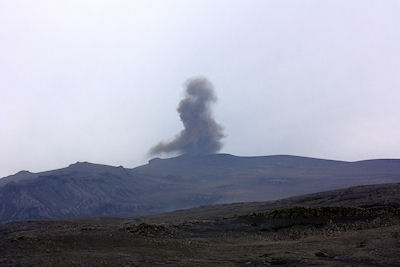
A small ash eruption from Eyjafjöll photographed on the afternoon of 17 June 2010
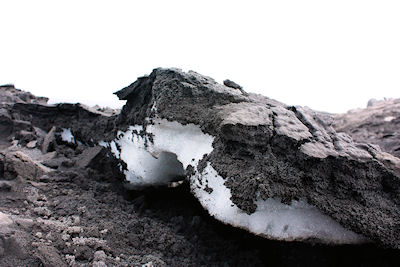
A layer of volcanic ash from Eyjafjöll on top of snow in the Fimmvörduhals pass - photographed on 17 June 2010
|
|
|
The two images below are of volcanic ash particles collected approximately 4km from the Eyjafjöll eruption
site. The particles are coarse, mostly ~1mm across, but some reaching as much as 8mm. Amongst the coarser particles
you can see very fine glassy particles also.
|
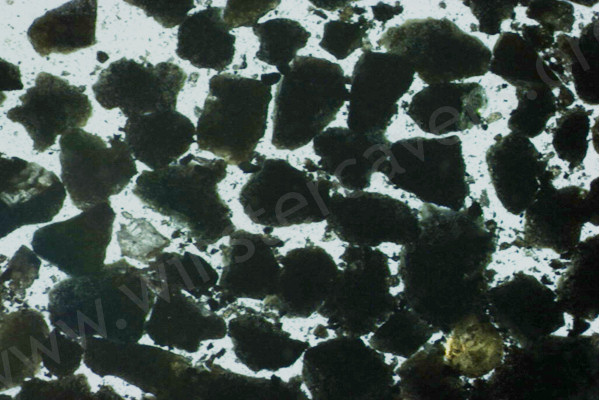
|
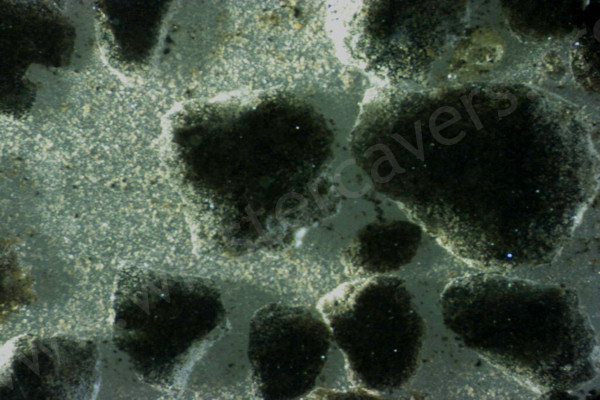
|
|
The two images below are of volcanic ash particles collected at Skogar, approximately 11km from the Eyjafjöll eruption
site. The particles are fine, typically ~0.25mm across, but some reaching as much as 2mm. There is also a great deal of
very fine dust. Again, you can see clearly some fine glassy particles also.
|
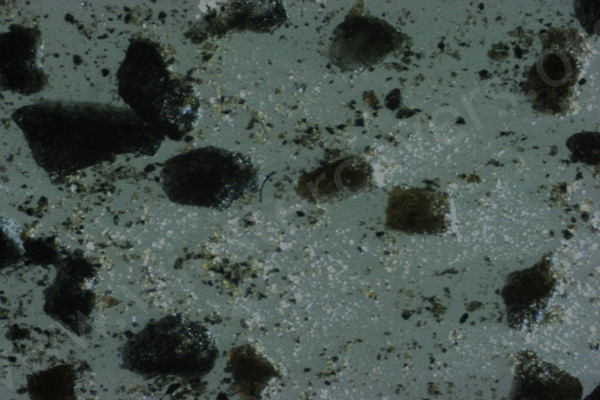
|
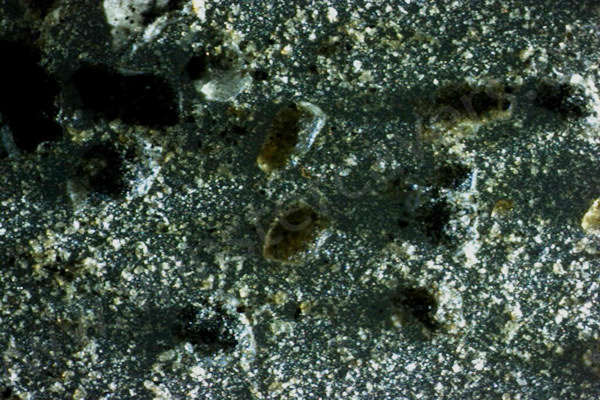
|
|
View Iceland in a larger map
|
|
Ash / Dust survey by the BGS
During the eruption, we also participated in a survey by the BGS (British Geological Survey), collecting dust samples to study the distribution of ash that was
landing on the UK. We'll provide a link to the results as soon as they are published.
|
|